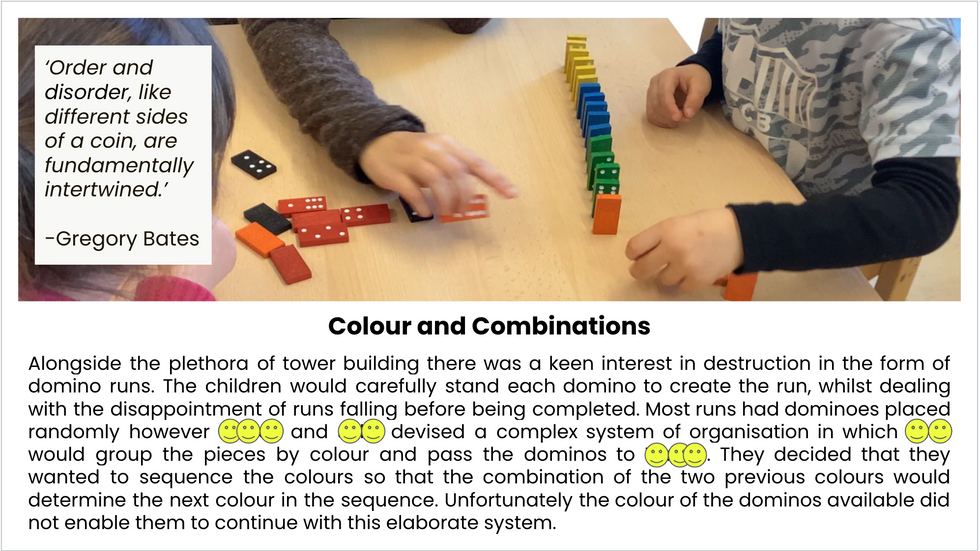The Translanguaging Teacher

Children are natural organisers. They are sequencers of objects and events. I remember noticing this for the first time as my own daughter at the age of two diligently lined up all her toys. I more recently had the opportunity to learn a variety of organisational languages from observing the children in my class as they played.

During our recent unit of inquiry into How We Organise Ourselves we were exploring how children organise themselves and learn from one another. We were particularly interested in answering the following teacher research questions:
What does to it mean to listen - what kinds of organisational languages are children using? What do they tell us?
How / what scaffolding is needed in specific groupings for collaboration to be successful?
How can we hear the quieter voices in our class?
In what ways is power shared in the classroom?
The proposals offered to the children often focused on construction as a means of collaboration. Early in the unit we spent time simply observing the types of organisation that were being demonstrated by the children. In my class I observed the following: lines, patterning, repetition, sequencing, roles, written recording, colour, height, grouping, symmetry, matching and equivalents.
To read more about the specific types of organisation used by the children read my documentation below.
As I learned these organisational languages from the children I could not help but reflect and to make connections between them and the organisation used in their spoken and written named languages. The differing ways in which words are organised in a sentence, or the different ways in which our letters and sounds are organised and represented. While the children were able to translate their organisational thinking into oral description and written recording. I now wonder whether they would make conceptual connections from the organisation used with blocks to the way language is organised or even how they organise their languages in their head! Much more to explore in this area which I believe has wide ranging, transdisciplinary possibilities.























